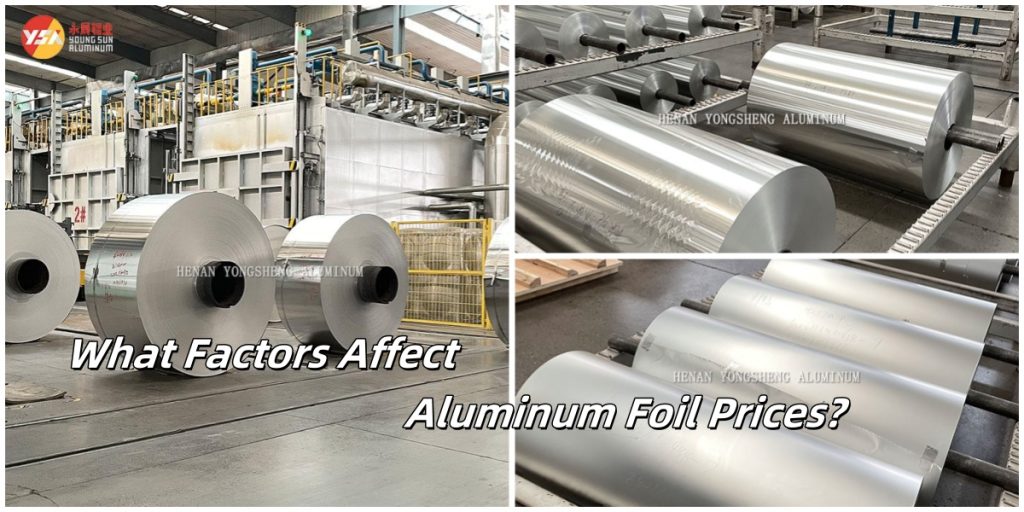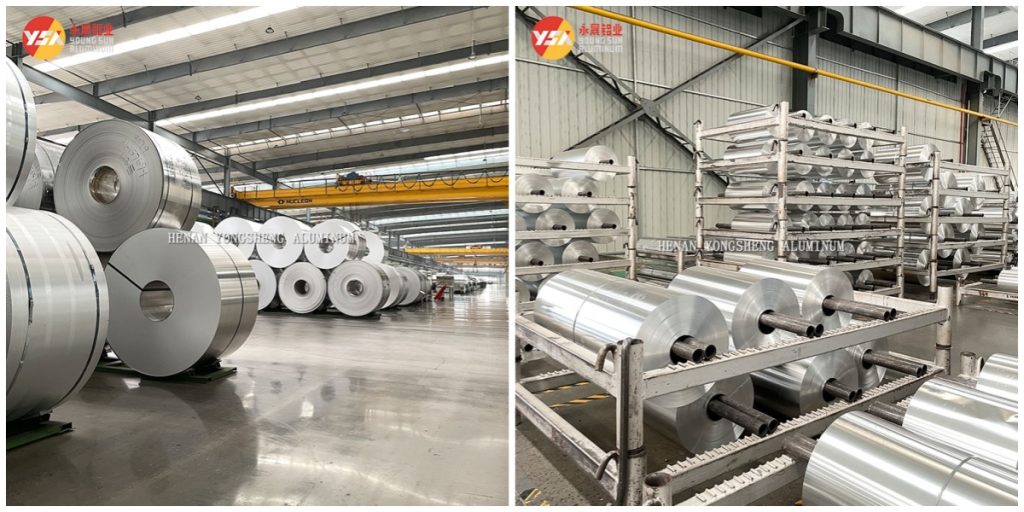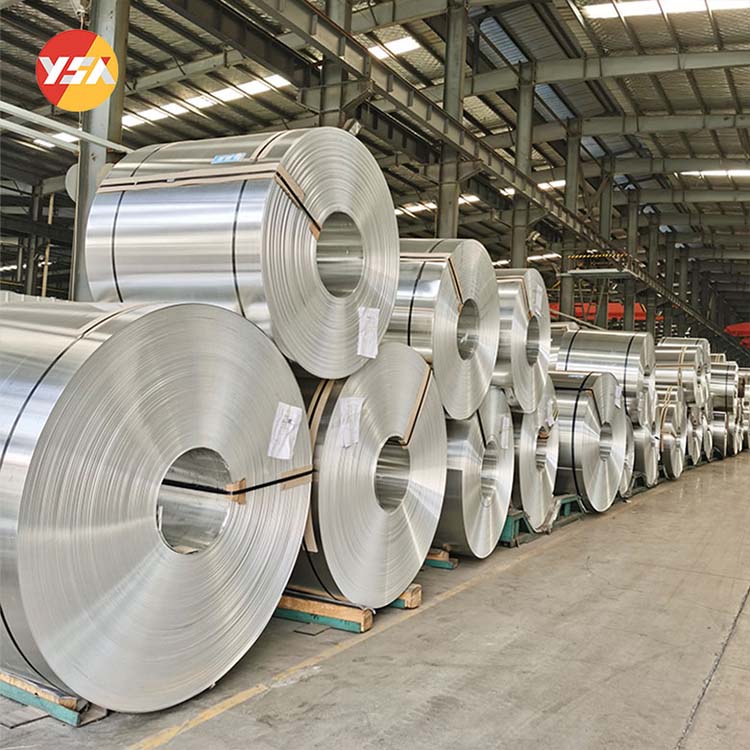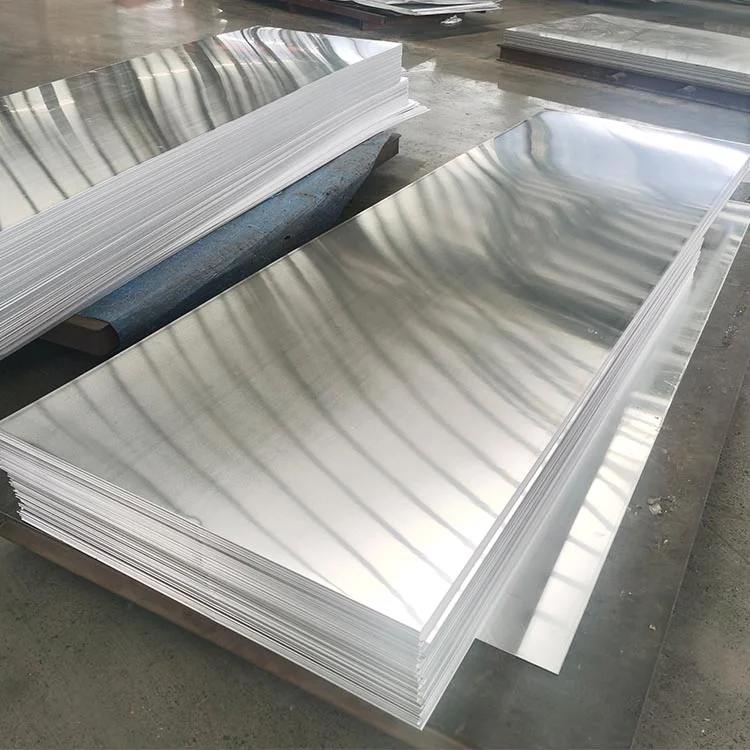
Basic Costs
Raw Material Costs
- Aluminum Ingot Prices: Linked to aluminum futures prices on the London Metal Exchange and the Shanghai Futures Exchange.
- Transmission Mechanism: Rising aluminum ingot prices almost inevitably drive up aluminum foil costs, making them the core driver of price fluctuations.
- Factors Influencing Aluminum Prices: Global bauxite supply, alumina production capacity, electrolytic aluminum production, inventory levels, macroeconomic expectations, the US dollar exchange rate, geopolitical and trade policies.
Production Costs
- Energy Costs: Melting, rolling, and annealing processes consume significant energy, and fluctuations in electricity and natural gas prices significantly impact costs.
- Basic Processing Costs: Includes equipment depreciation, labor, auxiliary materials, administrative expenses, and environmental compliance costs. Economies of scale and operational efficiency come into play here.
Industry Characteristics Affecting Aluminum Foil Prices
The aluminum foil industry has several distinct characteristics that shape its operating model and competitive dynamics.
Capital Intensity
- Large Equipment Investment: Aluminum foil production requires a range of expensive, specialized equipment, including melting furnaces, hot rolling mills, cold rolling mills, finishing mills, annealing furnaces, slitting mills, and coating/laminating equipment. Modern high-speed rolling mills, in particular, require significant investment per unit.
- Significant Economies of Scale: Significant fixed costs mean that companies must achieve significant production scale to effectively spread unit costs and achieve profitability. Small-scale producers are at a significant cost disadvantage.
- High Entry Barriers: The initial investment threshold is extremely high, deterring many potential new entrants.
Technology Intensity
- Complex and Precise Processes: From aluminum liquid purification, ingot casting, hot rolling, cold rolling, foil rolling, slitting, annealing, and possible surface treatment, each step involves complex physical and chemical changes and precise control.
- Continuous Technological Iteration: Equipment upgrades, process optimization, and new product development require ongoing technological investment and R&D.
- High Dependence on Know-How: Producing high-quality, highly consistent aluminum foil requires extensive practical experience and process know-how, which often requires long-term accumulation and development.
Energy Intensive
- Energy-intensive Processes: Melting, hot rolling, and annealing are the primary energy-intensive processes. Electrolytic aluminum itself is an energy-intensive product, and aluminum foil processing further increases energy consumption.
- High Energy Cost Proportion: Energy costs, such as electricity and natural gas, account for a significant proportion of total production costs, second only to the raw material aluminum ingots. Fluctuations in energy prices have a significant impact on production costs.
- Environmental Pressure: High energy consumption leads to high carbon emissions, and the industry faces increasingly stringent environmental regulations and potential carbon tax costs.
High Raw Material Cost Proportion
- Aluminum ingot costs typically account for 60%-80% of the total cost of aluminum foil production. This leads to a high correlation between aluminum foil prices and base aluminum prices, directly squeezing the profit margins of processing companies.
- Companies generally require sophisticated raw material procurement strategies and risk management.
Long Industrial Chain and Cyclicality
- Upstream Dependence: Highly dependent on aluminum ingot supply, affected by fluctuations in the electrolytic aluminum industry.
- Downstream Diversification: Demand comes from multiple industries, including packaging, air conditioners, capacitors, batteries, and construction. Each industry has its own business cycles, but overall, it is still affected by the macroeconomic cycle.
- Delayed Capacity Adjustment: Due to its asset-heavy nature, capacity construction cycles are long, and there is a lag in responding to demand changes, which can easily lead to supply and demand mismatches and cyclical price fluctuations.
Customer Stickiness and Certification Barriers
- High Quality Stability Requirements: Downstream industries such as food, pharmaceutical packaging, lithium batteries, and capacitors have extremely strict requirements for the physical and chemical properties, surface quality, cleanliness, and consistency of aluminum foil.
- Strict Supplier Certification: Entering the supply chain of core customers requires a lengthy certification process, covering multiple aspects such as quality systems, production environment, and traceability.
- High Switching Costs: Once certified and stable supply is achieved, customers are generally reluctant to switch suppliers due to quality risks, production disruptions, and recertification costs, resulting in strong customer stickiness.
Highly Differentiated Products
- Various Specifications: Numerous combinations of thickness, width, state, surface finish, and mechanical properties are available.
- Customized Applications: Different downstream applications have distinct performance requirements. For example, packaging foil requires formability and barrier properties; air conditioning foil requires hydrophilicity and strength; and battery foil requires thickness uniformity, tensile strength, elongation, and burr control.
- Functionalization Trend: Demand for higher-value-added products such as coated and composite foils is growing.
Supply and Demand Relationship
Supply Side
- Global and Regional Capacity and Operating Rates: New capacity additions and maintenance or shutdowns of existing capacity directly impact market supply.
- Inventory Levels: Inventory levels at various stages of the supply chain reflect the degree of immediate supply constraints.
Demand Side
- Packaging: Food, pharmaceuticals, tobacco, and daily consumer goods.
- Durable Consumer Goods: Air conditioning heat exchangers, which exhibit significant seasonality.
- Emerging Industries: Lithium battery current collectors and capacitors.
- Architectural decoration, etc.
- Competition from Substitutes: Changes in the prices and performance of other materials can impact demand for aluminum foil.

Technical Barriers Affecting Aluminum Foil Prices
Technical barriers in aluminum foil production manifest themselves on multiple levels and are key to differentiating a company’s competitiveness.
Ultra-thin Rolling Technology Barriers
- Thickness Uniformity Control: Production thicknesses range from 0.006mm to 0.2mm, especially when producing double-zero foil, requires ultra-precise thickness control across the entire width and length during high-speed rolling. This places extremely high demands on rolling mill accuracy, flatness control, roll grinding, rolling oil performance and filtration, and process parameter optimization.
- Strip Break Control: Thinner foil is more fragile, making it more susceptible to strip breakage at high rolling speeds. Reducing the strip break rate is a core challenge in improving production efficiency and yield, involving comprehensive technologies such as material metallurgical quality, rolling process, tension control, and equipment stability.
Strip Shape and Surface Quality Control Barriers
- Advanced Flatness Control: Ensuring that the foil is flat and free of wave and warping during rolling and subsequent processing requires advanced flatness inspection and control systems.
- Surface Defect Control: Avoiding defects such as pinholes, bright spots, dark spots, scratches, oil spots, and chatter marks requires stringent requirements for roll quality, a clean production environment, rolling oil management, and process hygiene. High-end applications, in particular, have a near-zero tolerance for surface defects.
Performance Consistency Control Barrier
- Microstructure Control: By precisely controlling the melt composition, homogenization treatment, rolling deformation, annealing temperature, and time, the foil’s grain size, texture, and precipitated phases are precisely controlled, thereby consistently ensuring mechanical properties such as strength, elongation, deep drawability, and anisotropy.
- Batch-to-Batch Stability: Maintaining highly consistent performance across batches, meeting the requirements of downstream automated high-speed production lines, is a comprehensive reflection of technical management expertise.
Specialty Alloys and High Purity Control Barrier
- Alloy Design: Specialized alloys are developed for specific applications, such as battery foil, which requires a specific alloy composition to ensure a balance of strength and conductivity, and capacitor foil, which requires high-purity aluminum and trace additives to control texture.
- High-purity Control: The production of electronic aluminum foil requires an aluminum purity >99.99%, placing extremely high demands on raw material purity and preventing contamination during the production process.
Heat Treatment Technology Barriers
Precision Annealing: The annealing process has a decisive impact on the mechanical properties, surface condition, grain size, and degree of recrystallization of the final product. Precise control is required to achieve the target product state.
Functional Coating/Laminar Technology Barriers
- Coating Uniformity and Adhesion: Achieving uniform application and strong adhesion of nano-/micron-level functional coatings on ultra-thin foils presents significant technical challenges.
- Laminar Technology: The lamination of aluminum foil with plastic films, paper, and other materials requires addressing issues such as interfacial bonding strength, barrier properties, and heat sealability, while ensuring dimensional stability of the composite material.
Detection and Analysis Technology Barriers
- Online Inspection: 100% online inspection of thickness, shape, and surface defects on high-speed production lines requires high-precision, highly reliable sensors and data analysis systems.
- Offline Analysis: In-depth analysis of material microstructure, chemical composition, mechanical properties, and surface characteristics supports process improvement and quality issue tracing. This requires expensive equipment and specialized personnel.
Market and External Environmental Factors
Industry Structure and Competitive Landscape
- Concentration and Bargaining Power: Market leaders in highly concentrated markets have greater pricing power.
- Intensity of Competition: Competition in a competitive market drives down processing fee premiums.
Macroeconomic and Financial Environment
- Economic Growth/Recession: Impacts overall industrial activity and consumer demand.
- Inflation/Interest Rates: Impacts costs, financing, and spending power.
- Exchange Rate Fluctuations: Impacts the cost of imported raw materials and the competitiveness of exported products.
- Market Sentiment and Speculation: Speculation in the futures market amplifies short-term aluminum price fluctuations.
Policies and Regulations
- Environmental Protection Policy: Carbon emission costs and pollutant emission standards increase compliance costs.
- Energy Policy: Electricity pricing policies and power rationing measures for energy-intensive industries directly impact production.
- Industrial Policy: Support for downstream industries such as new energy and new materials stimulates demand.
- Trade Policy: Anti-dumping/countervailing duties and tariffs significantly alter trade flows and regional prices.
Certification Barriers and Customer Loyalty
Strict supplier certification processes and long lead times in the high-end market create barriers. Certified companies secure more stable orders and premiums, resulting in high customer switching costs.
Thus, the final price of aluminum foil = base aluminum ingot cost + base processing costs + supply and demand and technology premiums.


